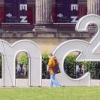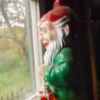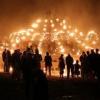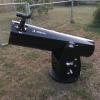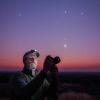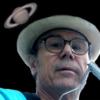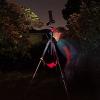If you're using LENR (Long Exposure Noise Reduction) on a Canon EOS 6D or 5D to shoot in-camera darks, you can shoot several lights in a row until the camera forces a dark frame that it subtracts from the previous shots. I described this in an earlier post, where I noted that you could shoot three light frames in a row before the camera would pause and create its dark frame of the same duration.
I just read, in Alan Dyer's iBook "How to Photograph and Process Nightscapes and Timelapses," that you can extend this to four light frames for the 6D and 5D Mark III, and five for the 5D Mark II. Oddly enough, you gain one light frame by shooting Raw + JPEG.
Apparently the way The EOS nD (single digit) cameras do this is by storing the frames in the buffer, then subtracting the dark from them in one batch and spitting them all out to the memory card. I can't understand how also shooting JPEGs in this process buys you one more light frame. (I would think it would be the opposite, that there'd be even less buffer memory available. But for some reason, if you shoot only JPEG, you get one fewer light frame. ![]() ) Nonetheless, I just verified this with my 6D.
) Nonetheless, I just verified this with my 6D.
I have no use for the JPEGs alongside the Raws, but they take up so little space that I'll just shoot that way, and increase my percentage of exposures that are light frames from 75% to 80%.





